Backlash is an inherent property of lead screw assemblies due to the sliding motion between the screw and the nut. For some applications, a certain amount of backlash, or “play,” can be tolerated, but applications such as positioning, dispensing, or assembly often require a level of precision and repeatability that can’t be achieved if backlash is present.
Helix Linear gives a simple but useful definition of backlash:
Backlash is the relative axial movement between the nut and the screw without rotation of either one.
To address these applications, lead screw manufacturers have developed ways to compensate for backlash, although there are drawbacks to reduced-backlash or zero-backlash designs. First, backlash compensation typically increases the nut diameter, length, or both. Second, to eliminate or reduce backlash, the clearance between the screw and the nut must be eliminated or reduced. When clearance is removed, sliding friction between the components increases, causing higher heat generation, reduced efficiency, and shorter life.
Backlash compensation methods typically follow one of two basic designs. However lead screw manufacturers have developed variations of these designs in an attempt to ensure that backlash reduction (or elimination) remains consistent throughout the life of the screw assembly, even as the screw and nut wear. There have also been recent advancements in anti-backlash nut designs to minimize the added friction (and increased drive torque) that results from backlash compensation.
The most basic method for reducing or eliminating lead screw backlash is to use springs or other compliant element, such as Industrial Washers, to axially force two nut halves against opposite flanks of the screw thread. This design is relatively simple, and the use of a spring ensures that backlash reduction is maintained over a certain amount of component wear.
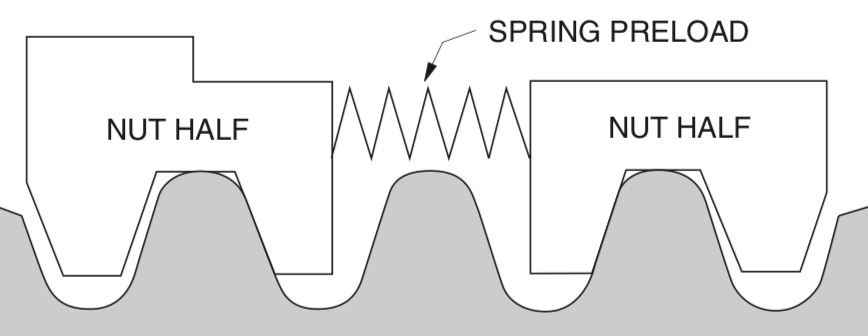
Image credit: Haydon Kerk
The downside of this method is that backlash won’t be compensated if the load is greater than the force from the spring. A higher load can be addressed with a stronger spring, but a stronger spring causes more friction between the nut and the screw, which reduces efficiency and requires more drive torque to overcome. The use of a spring or compliant element also means that axial stiffness is relatively low.
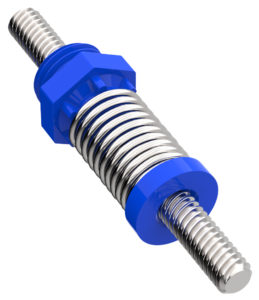
A variation of this design uses a nut with “fingers,” or protrusions, that can be pushed into the screw threads via radial force. This radial force is delivered by a spring that forces a ring onto the fingers, causing them to bend downward into the thread, reducing or eliminating clearance between the screw and nut. This design enables backlash reduction or elimination even if the load is greater than the spring force, and it has a smaller effect on friction and drive torque than the traditional design.
Another design that applies radial — rather than axial — force to the nut to eliminate backlash uses a spring that is essentially wrapped around the outer body of the nut. This design maintains consistent backlash reduction (or elimination) regardless of wear, and it can be adjusted to meet the application requirements for preload, friction, and running clearance.


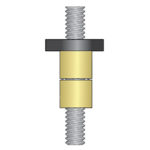
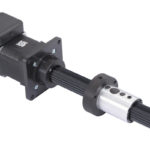

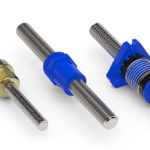
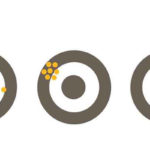

Leave a Reply
You must be logged in to post a comment.